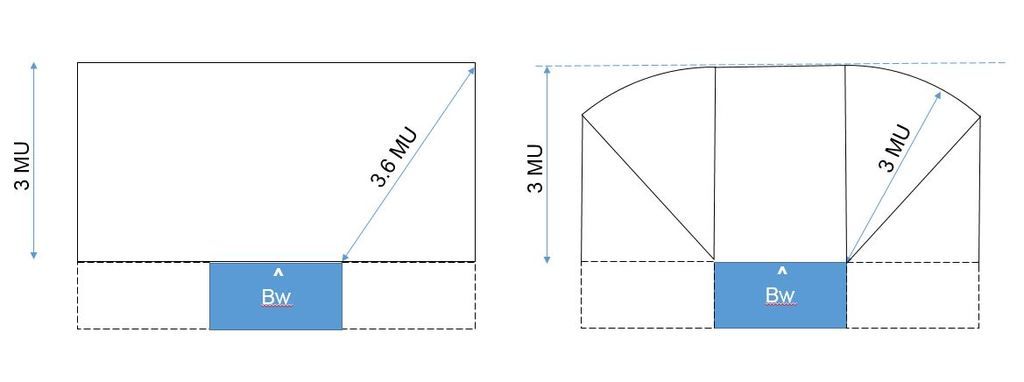You're correct, the shape of the region where firing can occur is more complex than a simple rectangle. What you are describing (the image didn't come through on my end) is the intersection of the rectangle 3mu deep and 6mu wide centered on the front edge and the pill-shape created by expanding the firing edge 3mu in every direction; as you say it rounds the two far corners of the firing box slightly. That second shape is properly called a stadium, not an oval, but that's a usage with which most English-speakers are unfamiliar (I had to look it up). Wikipedia tells me that "discorectangle" and "obround" are alternative names for that shape, but I've never heard those words before. Discorectangle sounds sort of 1979.

There is no geometric name for the shape we are discussing (intersection of the rectangle and the stadium), so we used "rectangle" to get the idea across quickly. The same thing is true for the shape of the targeting area of artillery, although the rounding of the two corners is very subtle for that zone.
In fact, the shape is even more complex -- when you make the quadrilateral that determines whether firing is possible, at least one of the edges of the "firing is legal" quadrilateral must be less than 3mu, which means some enemies may be partially within that intersected shape and still not be legal targets. It is possible that a target will be partially inside that shape and not be a legal target.


